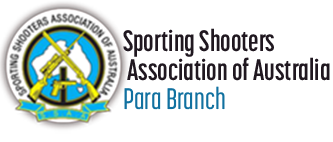
Section Contact Details
Single Action Captain:
Frank Hahn – 0412 351 333
Section Program
Single Action is a multifaceted discipline that uses original or replica firearms that were commonly used in the Old West period of 1800 to 1899.
This includes single-action revolvers, lever-action and slide-action rifles and carbines, lever-action and pump-action shotguns, and side-by-side shotguns without automatic ejectors. The targets are generally reactive and vary in shape and dimension. In addition to competition, Single Action shooters also preserve, promote and respect the skills, traditions and pioneering spirit of the historic American Old West, often adopting a shooting alias appropriate to the era.
Firearms Used
The firearms used in competition today are typical of those used in the Old West and include single-action revolvers, lever-action and pump-action rifles, side-by-side shotguns without automatic ejectors and lever-action and pump-action shotguns. Essentially, the firearms and calibres used in competition are those that were commonly in use during the 1800s.
The firearms may be originals or replicas, but they must all be in good and safe working order. Some modifications are permitted; however, modifying the firing, cocking, chambering or levering mechanisms of the firearm in any way that changes the process from an entirely manual operation to any other style operation is not permitted. Some shooters add external embellishments such as tacks, carving, engraving, chequering and inlays to the stocks and grips of their firearms to reflect the time period. This is permitted, as long as it does not provide any kind of radical or target-type grip enhancement and is permitted within the specific match rules relating to external modifications. All firearms may be repaired and/or restored to their original condition and internal parts may be smoothed, reprofiled, polished, deburred or replaced, provided they do not conflict with the rules relating to internal modifications.
Rifles
The rifles or carbines used in main and team matches must be originals or replicas of lever-action or slide-action rifles manufactured during the period from about 1860 to 1899 incorporating a tubular magazine and exposed hammer. Rifles with box magazines are not permitted. Certain shooting categories require a specific type of rifle and ammunition to be used.
Rifles must be chambered for centrefire pistol calibres of at least .32-calibre and no larger than .45-calibre. Rifle calibres such as the .30-30- and .38.55-calibres are specifically prohibited. The use of .22-calibre rimfire rifles is allowed within certain Junior shooting categories. Possibly the most popular calibres for use in main competition are the .45 Long Colt and .38-calibres.
Shotguns
Original or replica side-by-side or single-shot shotguns typical of the period from about 1860 to 1899 with or without external hammers, single- or double-triggered and without automatic ejectors are permitted. Lever-action and tubular-feed exposed hammer shotguns are also permitted. The Model 1897 Winchester slide-action shotgun is the only slide- or pump-action shotgun allowed for competition. Military configurations are specifically prohibited.
Side-by-side, single-shot and lever-action shotguns must be centrefire of at least 20-gauge and no larger than 10-gauge. Slide-actions must be centrefire of at least 16-gauge and no larger than 12-gauge. Certain Junior categories allow for the use of .410-bore shotguns of single- or double-barrel configuration, with certain shooting categories also requiring the use of specific types of shotgun.
Revolvers
Original single-action revolvers manufactured prior to 1899 or approved replicas are the only revolvers allowed in main match competition. Certain shooting categories require the use of specific types of revolvers and calibres. No more than two main match revolvers may be carried to the firing line at any time. The Revolver calibres are consistent with those used in Rifle competition.
Targets
Targets used in SAS matches are generally reactive plates specifically designed for this type of competition. They can be square, round or card-suite shapes and are often based on a 400mm x 400mm size. Multiple targets are used on each match stage. Targets are set in accordance with stage description and must be engaged in exactly the same sequence from static positions, regardless of which category a participant competes in. Sequences are clearly described in the shooter’s program.
